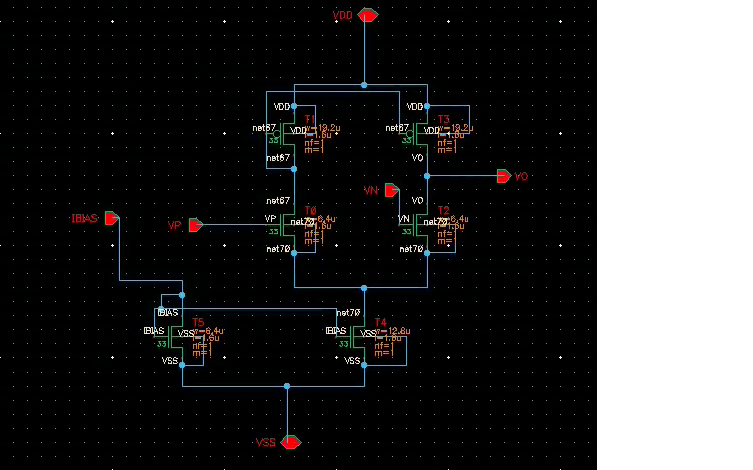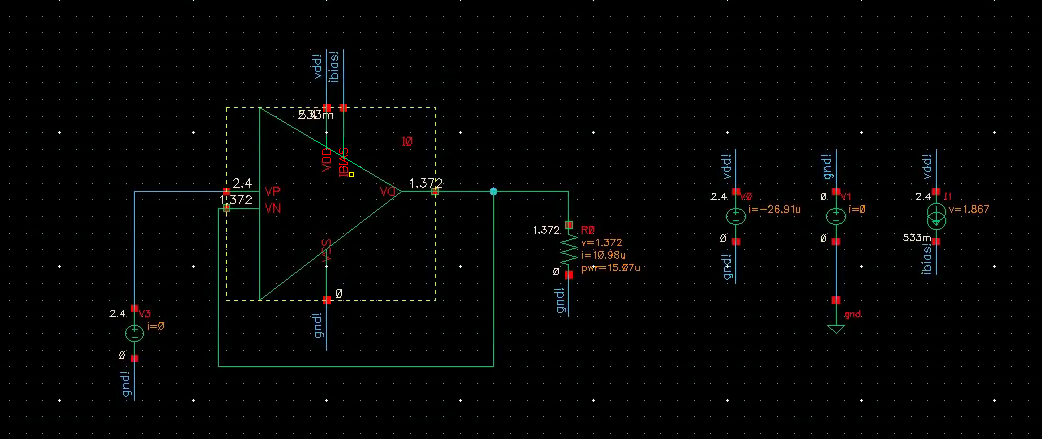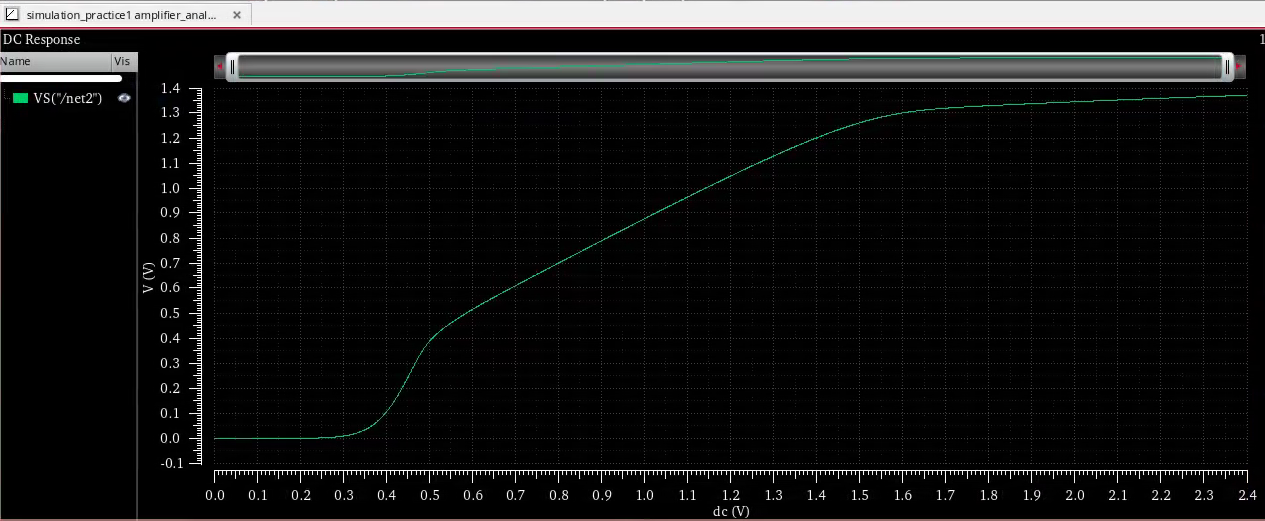Post History
I am currently learning amplifier design, after constructing the unity gain amplifier(which is a differential-input single-ended-output amplifier) in the unity-gain feedback configuration I have pe...
#1: Initial revision
Determining the output swing, output common-mode range and input common-mode range in a differential amplifer
I am currently learning amplifier design, after constructing the unity gain amplifier(which is a differential-input single-ended-output amplifier) in the unity-gain feedback configuration I have performed a DC sweep of the input common-mode voltage from 0 to 2.4V. Below is the circuit and plot for output voltage with the DC sweep input. How to figure out the input common-mode range, output common-mode range, and output swing from the plot? The resistive load value is 125 Kohms. 1) As per the meaning I understood of input common-mode range, it is the input range for which output will not be clipped. So that means is it the linear voltage from 0.4 V to 1.3 V as we are using unity gain? 2) As per the meaning I understood of output swing, the max output voltage range where it is not clipped. That means the same linear portion from the plot shown below i.e. 0.4 V to 1.3 V. 3) As per the meaning I understood of output common-mode range,it is the same as output swing. If my understanding is wrong kindly educate me and I request to elaborate to figure this out. Below are the screenshots of the circuit, schematic using the circuit as a symbol and plot.   


















